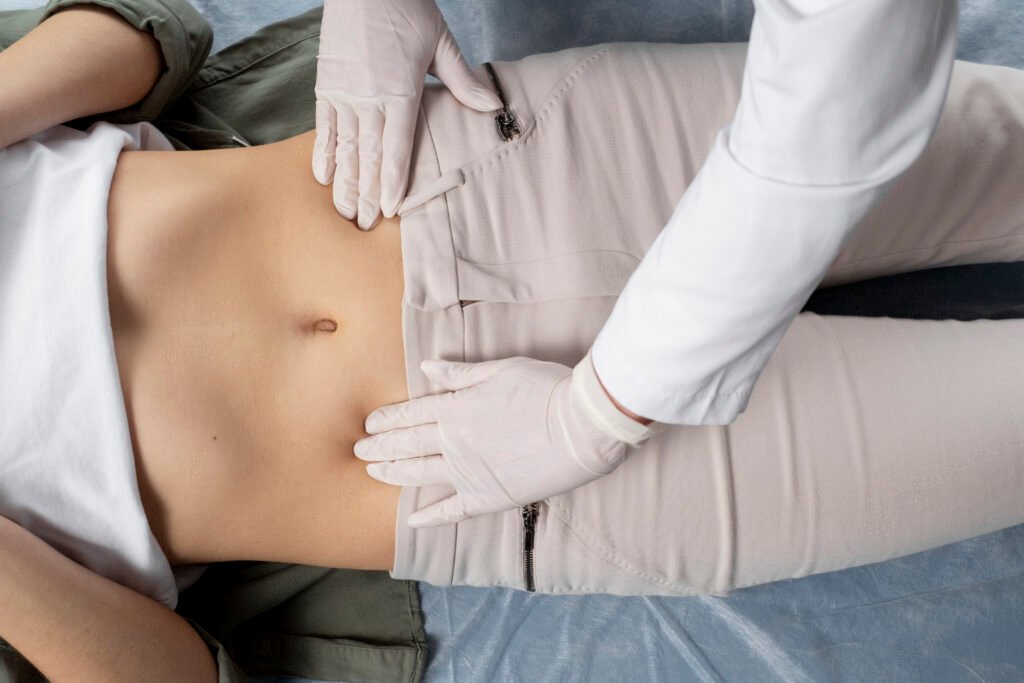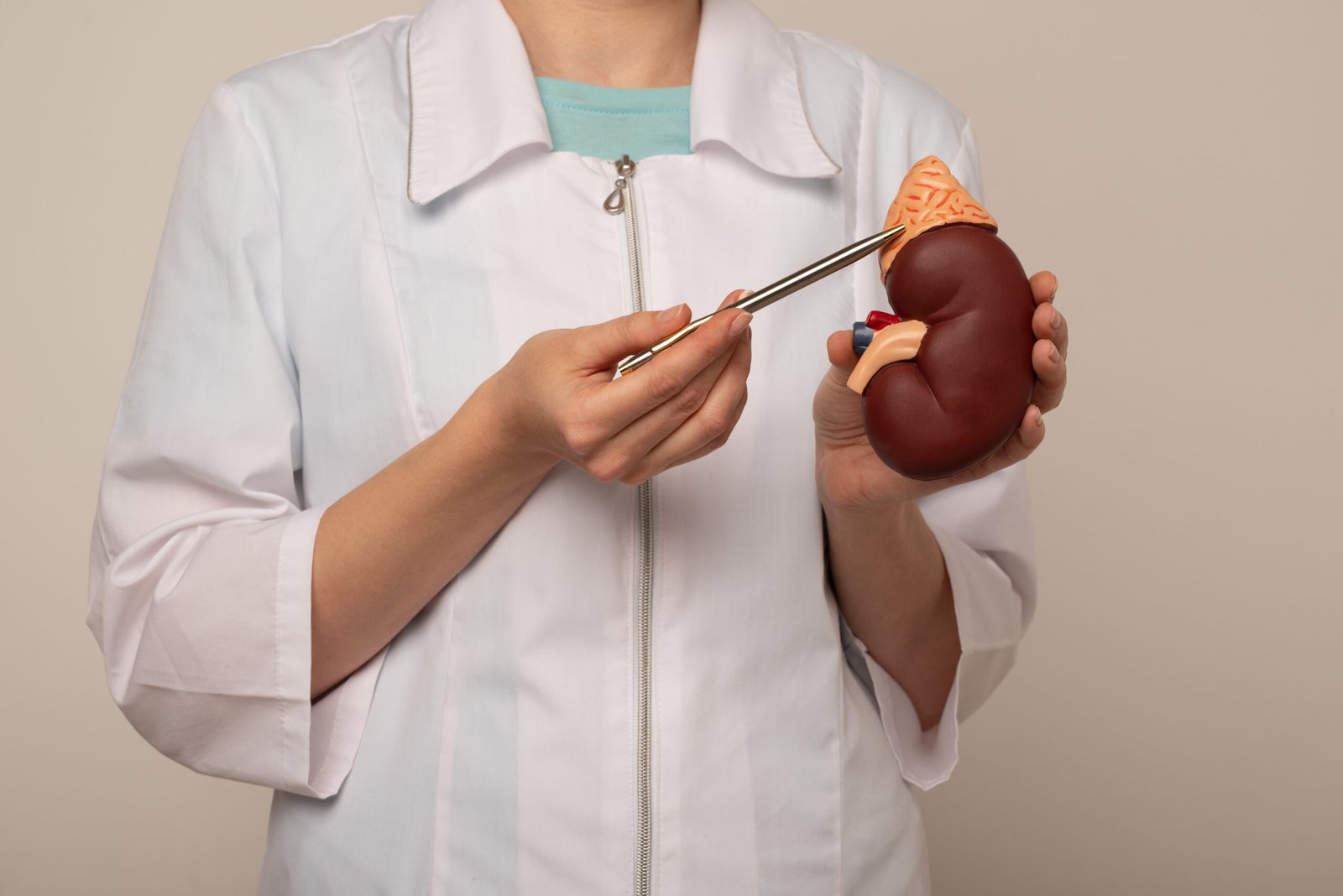Nephrostomy Tube Placement in Chandigarh
Relieve Pain, Restore Comfort – Best Nephrostomy Tube Placement in Chandigarh by Dr. Rajarshi Bahadur!
What is Nephrostomy Tube Placement?
Nephrostomy tube placement is a minimally invasive procedure done under local anesthesia and imaging guidance, where a thin tube is inserted through the skin into the kidney to drain urine. It is mainly used when the normal flow of urine is blocked due to kidney stones, ureteric strictures, tumors, infections, or injuries. The tube helps relieve pressure on the kidney, prevents infection, and protects kidney function. The urine collects in a drainage bag outside the body, and the tube may be temporary or long-term depending on the condition.

How Does the Procedure Work?
Preparation & Consent
Patient is explained about the procedure and written consent is taken.
Sterilization & Anesthesia
Local anesthesia is given to numb the area; sedation may be used if required.
Imaging Guidance
Ultrasound or fluoroscopy (real-time X-ray) is used to locate the kidney and the blocked area.
Needle Insertion
A thin needle is inserted through the skin into the kidney under imaging guidance.
Guidewire Placement
A flexible guidewire is passed through the needle into the kidney’s collecting system.
The needle is then removed, leaving the guidewire in place.
Dilating the Tract
The skin and tissue around the guidewire are gently widened (dilated) to create a path for the tube.
Tube Insertion
A nephrostomy tube (thin, flexible catheter) is placed over the guidewire into the kidney.
The guidewire is removed once the tube is in the correct position.
Securing the Tube
The tube is fixed to the skin with stitches or adhesive dressing.
A drainage bag is attached to collect urine.
Post-Procedure Imaging
X-ray or ultrasound may be done to confirm correct placement.
Aftercare
The site is kept clean and dry.
Patients are monitored for urine output, bleeding, infection, or pain.
Regular tube care and bag changes are taught to the patient.
Operating Hours
-
Park Hospital
Jail RD, Phase 9, Sahibzada Ajit Singh Nagar, Punjab 160062
Mon - Sun : 10:00 AM - 01:00 PM -
Healing Hospital
4th Floor, Healing hospital, Sector 34A, Sector 34, Chandigarh, 160022
Mon - Sun : 02:00 PM - 06:00 PM

Why Choose Us
Why Choose Nephrostomy Tube Placement in Chandigarh?
If you are considering nephrostomy tube placement, here’s why Chandigarh is a trusted destination for safe and advanced treatment:
Chandigarh has highly skilled specialists trained in safe and precise nephrostomy procedures.
Hospitals here use modern ultrasound and fluoroscopy guidance for accurate tube placement.
Procedures are performed with local anesthesia and small incisions, ensuring faster recovery and less pain.
Compared to metro cities, Chandigarh offers quality treatment at more reasonable prices.
What Conditions does Nephrostomy Tube Placement treat?
Nephrostomy tube Placement helps in treating the following conditions:
Post-Procedure Care and Precautions
After your treatment, Dr. Rajarshi Bahadur will recommend the following precautions to ensure optimal recovery:

Tube & Site Care
Keep the tube site clean and dry.
Always wash hands before touching the tube or dressing.
Change dressings as instructed (usually every 1–2 days or if wet/soiled).
Drainage Bag Care
Keep the drainage bag below kidney level to allow proper urine flow.
Empty the bag regularly; do not let it overfill.
Clean the bag with mild soap and water or as per hospital instructions.
Monitoring
Check urine output daily (amount, color, presence of blood or pus).
Watch for leakage around the tube site.
Inspect for signs of infection: redness, swelling, foul-smelling discharge, or fever.
Activity & Lifestyle Precautions
Avoid heavy lifting, bending, or vigorous exercise until advised.
Wear loose, comfortable clothing to prevent tube irritation.
Take showers instead of baths (no soaking until cleared by doctor).
Pain & Medication
Mild pain or discomfort is normal; take prescribed pain relievers.
Continue antibiotics (if prescribed) to prevent infection.
When to Call Your Doctor Immediately
Fever, chills, or severe pain.
Sudden drop in urine output.
Tube comes out or stops draining.
Heavy bleeding in urine.
